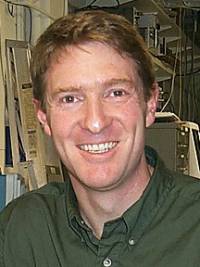In the 1950s, the atomic clock was the pinnacle of split-second time-keeping. Today, physicists use its successors based on energy transitions in rubidium atoms that gives them 100 times more accuracy. These clocks currently operate at their theoretical limit but nevertheless are accurate to one second every 50 million years. Quantum noise, the random fluctuations of atoms and ions and the grim truth of Heisenberg’s Uncertainty Principle would probably mean no improvements for the next 50 million years.
However, optical clocks improve on this by upping the ante when it comes to the frequency at which they operate. Unlike the previous generation of microwave frequency clocks, optical clocks keep time by reference to a visible light transition in the 100 terahertz range. This is an advantage, Newbury told Spotlight, since the optical transition oscillates so many more times a second. An optical clock therefore can outstrip even the best Swiss timepiece and beats the rubidium approach by staying accurate to within one second in a billion years.

Nathan Newbury
Microwave frequency clocks are at the very heart of global positioning systems (GPS) because accurate timing means precise positioning, but what about GPS for interplanetary space travel and beyond? An optical clock would provide a much more accurate positioning system over much greater distances than those possible on Earth. The GPS system uses the microwave-based clocks, which are plenty sufficient for the positioning, adds Newbury, Sometimes people talk about optical clocks being needed for navigation for space travel – but then there are a lot of other impediments to that.
The phenomenal precision of such optical clocks has been limited to laboratory-based systems. But Nathan Newbury and his colleagues Scott Diddams and one Jim Bergquist and their respective teams at the National Institute of Standards and Technology (NIST) hope to set the optical clock free. This really is a collaborative effort between different groups and labs at NIST, adds Newbury. The teams’ efforts could be rewarded with a global network of scientists and engineers who will have no excuse for a lack of punctuality ever again.

Scott Diddams
The NIST scientists are developing a way to transfer the accuracy of optical clocks on to a beam of light that could be carried by the global telecommunications network. This could revolutionize cutting edge experiments that rely on incredible accuracy, such as the determination of physical constants, including the standard unit of time itself, the second. The second is currently defined with reference to a microwave transition of the caesium atom.

Jim Bergquist
Hitching optical clock accuracy to erbium fibre based frequency combs and a state-of-the-art Ti:sapphire laser allows the time signal to be hooked up to fibre optic telecommunications. The comb transfers the stable clock oscillations to a laser beam with a wavelength of 1.5 micrometres – the telecoms standard – and so allows the time signal to be carried by the fibre optic. The development of the Erbium fibre-frequency comb was one of the new parts demonstrated in our experiments, adds Newbury.
In preliminary tests, the ultra-precise signal was transmitted over a 750 metre stretch of optical networking, the researchers say, without significant loss of accuracy. This initial success suggests that scale-up to transmission distances of 50 kilometres or more should be possible.
There are a host of practical issues to actually implementing this on the global telecommunications network, concedes Newbury, this is just a first step towards that end goal.
Further reading
Nature Photonics, 2007, 1, 283-287;
http://dx.doi.org/10.1038/nphoton.2007.71
Timing Fundamental Constants
https://www.sciencebase.com/timing_fundamental_constants.html
Suggested searches
atomic clocks
Heisenberg’s uncertainty principle
global positioning systems
fibre optics